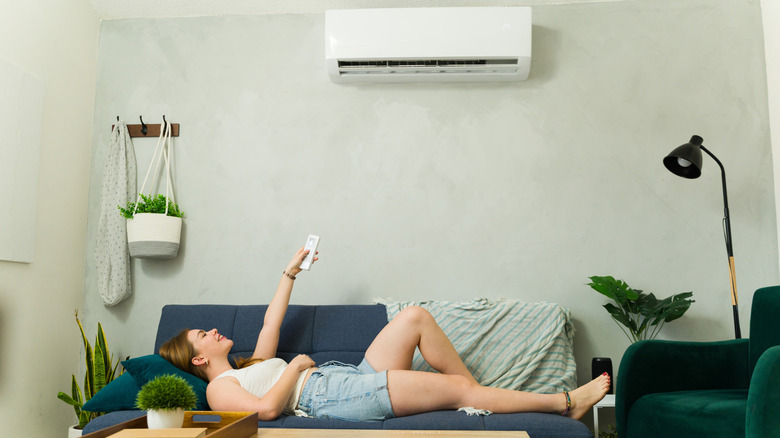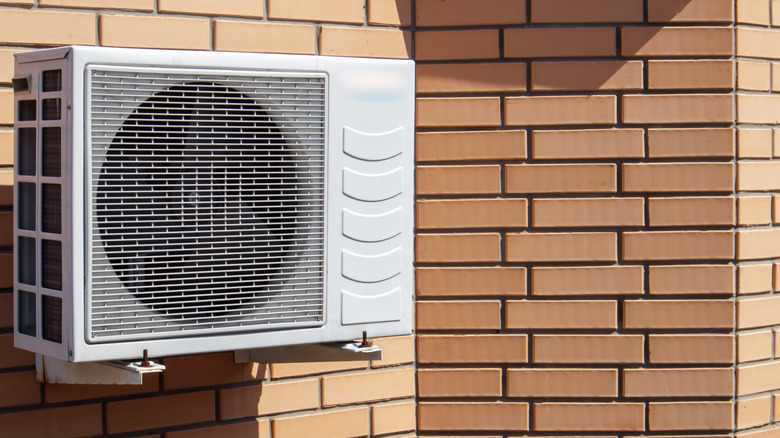The Placement Mistake You Should Avoid With A Mini Split
Mini split air conditioners are a great option for older homes without ductwork or for scenarios where installing it is just not feasible, such as in apartments or reduced budget situations. They're relatively small units, one installed outside and as many as eight installed inside, united by refrigerant lines that require less than a day and minimal construction work to assemble. Mini splits will keep your home warm during winter and fresh during summer, but the system is only as efficient and durable as its installation. Finding the best spot for both indoor and outdoor units is key to guarantee that they do their job well and for a long time. For that, you should always avoid placing them either in crowded or obstructed locations.
Keeping both indoor and outdoor components unblocked is essential to ensure correct airflow and easy access for maintenance. The mini split system relies on a complex heat exchange process involving the cyclical condensation and vaporization of the hot air that the indoor unit removes from the living space. In very simplistic terms, the indoor unit, also called the air handler, removes hot air from the room, replacing it with cold. The outdoor unit, in turn, is composed of a compressor and a condenser, which pump refrigerant liquid to the indoor unit and release heat to the outside air, respectively. It can only work if both units can absorb and release air adequately. Any blockage on either side will compromise it, keeping the mini split from performing properly.
How to ensure your mini split isn't obstructed
Recurring maintenance and associated costs are among the disadvantages of mini-split systems you should know before buying. A surefire way to minimize this, however, is to keep them unimpeded. When it comes to the indoor air handler, you should allow at least 1 foot of clearance on each side and at the front, as well as 6 inches at the top. This means keeping it away from door and window frames, furniture, and any kind of coverage. Additionally, you shouldn't install this half of your mini split in a corner or too close to the ceiling. Ideal placement is on an open wall, preferably central so it can evenly distribute the cold air.
As for the outdoor unit, the same rules apply, with the addition of accounting for something that's a little more unpredictable: the elements. Whether that's plant growth, dirt and dust, rocks, or snow and ice, the device should be kept as clean as possible all throughout the year, with no obstructions for 1 to 3 feet all around. Twigs, leaves, and other debris blown by the wind from nearby vegetation can also end up blocking the fan. Placing the outdoor unit underneath an overhead cover like a canopy to protect it from some of these hazards is another useful tip to prolong the life of your HVAC system.

